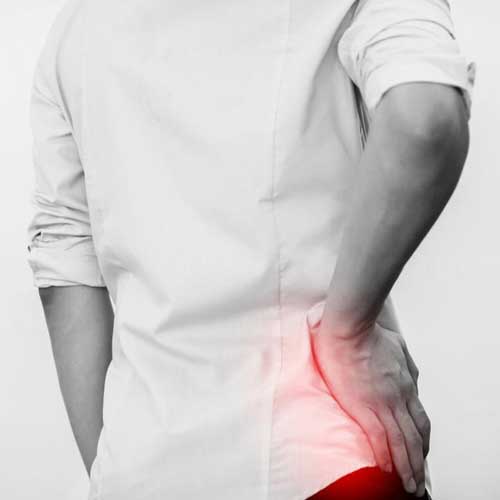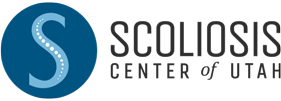Blogs
Understanding the Connection between Sciatic Pain and Scoliosis

Do you experience severe pain that radiates from your lower back down to your leg? If so, you might be suffering from sciatic pain, a condition that is commonly associated with scoliosis. Scoliosis, on the other hand, is a spinal condition characterized by an abnormal curvature of the spine. While each of these conditions can occur independently, research shows that they can also be interrelated. Below, you can learn all about the connection between sciatic pain and scoliosis.
How can scoliosis cause sciatic pain?
Scoliosis is a medical condition in which a person’s spine has a sideways curve. The curve is usually “S”- or “C”-shaped and typically presents obviously during childhood or adolescence. The degree of the curve can vary from person to person, with some having a noticeably altered physical appearance and others appearing to have a straight spine. Scoliosis can have various causes, including congenital spine deformities, genetic conditions, and neuromuscular problems.
How Can Scoliosis Compress Nerves in the Spine?
Because scoliosis is a three-dimensional deformity which affects the spinal curve, it can cause compression of the nerves that exit the spine.
The abnormal curvature of the spine in scoliosis can lead to the shifting and twisting of the vertebral bodies. This, in turn, can cause narrowing of the spinal canal – a condition known as spinal stenosis. The spinal canal is the bony tunnel that houses the spinal cord and nerve roots. When stenosis occurs, it can compress the nerves, leading to symptoms like pain, numbness, and weakness, often in the lower back and legs – a condition commonly known as sciatica. The severity of these symptoms can vary depending on the level and degree of nerve compression.
The compression can lead to nerve impingement, which can cause sciatic pain. Sciatic pain is a symptom that commonly occurs when the sciatic nerve is compressed. The sciatic nerve is the longest nerve in the body, stretching from the lower back down to the feet. When compressed, it can cause pain, numbness, tingling, and weakness.
How does sciatic pain affect scoliosis patients?
Sciatic pain can worsen scoliosis symptoms in patients, and vice versa. For instance, to compensate for the pain, scoliosis patients might adopt poor postural habits, which can exacerbate the curvature of the spine. In severe cases, patients can develop nerve-related complications such as foot drop or permanent leg weakness.
How can Scoliosis Worsen Sciatica Pain?
Scoliosis can exacerbate sciatica pain in several ways. The abnormal curvature of the spine can disrupt the natural biomechanics of the body, putting abnormal pressure on the sciatic nerve. As the curvature worsens, the spinal canal may become more narrowed, increasing the likelihood of nerve compression leading to sciatica.
Additionally, the body may attempt to compensate for the unnatural spinal curvature by adopting different postures. Unfortunately, these compensatory postures can often lead to further compression of the sciatic nerve, thereby increasing the severity of sciatica pain.
Moreover, the abnormal spinal curvature can cause muscle imbalances and increased muscle tension. The tightened musculature can put additional pressure on the sciatic nerve, causing increased pain. These factors, coupled with the body’s natural inflammatory response to nerve compression, can significantly intensify the symptoms of sciatica in individuals with scoliosis. It’s important to note that the severity of sciatica pain can vary depending on the degree of the spinal curve and the extent of the nerve compression.
How is sciatic pain and scoliosis diagnosed?
Sciatic pain and scoliosis are diagnosed through a physical examination, medical history review, and diagnostic imaging tests. X-rays, MRI, and CT scans can help diagnose scoliosis, while an EMG or nerve conduction study can help diagnose sciatic pain. Proper diagnosis is necessary to determine the most effective treatment approach.
Dr. Katalina Dean’s Diagnostic Approach to Scoliosis at The Scoliosis Center of Utah
At the Scoliosis Center of Utah, Dr. Katalina Dean follows a methodical two-part diagnostic approach to accurately identify and assess the degree of scoliosis in her patients.
The first part of the diagnosis involves a comprehensive physical assessment. Dr. Dean conducts a careful examination of the patient’s posture, looking out for any visible signs of abnormal curvature such as uneven shoulder heights, a prominent shoulder blade, or a noticeable tilt in the waistline. She also conducts a forward-bending test, which can reveal any rotational deformity or hump in the rib or lumbar area. This physical examination is crucial as it can indicate the presence of scoliosis in the patient.
Following the physical assessment, if scoliosis is suspected, Dr. Dean moves onto the second part of her diagnostic approach – the X-ray examination. This step provides a more definitive diagnosis. Utilizing state-of-the-art X-ray imaging technology, Dr. Dean captures detailed images of the patient’s spine from different angles. By analyzing these X-ray images, she can confirm the existence of scoliosis, measure the degree of the spinal curve, and determine the precise location of the curvature within the spine. This information is vital for planning an appropriate and effective treatment strategy for each individual patient.
What is the treatment for sciatic pain and scoliosis?
Treatment for sciatic pain and scoliosis at The Scoliosis Center of Utah typically involves a multidisciplinary approach that includes the innovative, holistic techniques of Chiropractic BioPhysics® and the ScoliBrace® system.
Chiropractic BioPhysics® or CBP® is a technique that combines biology, physics, geometry, and anatomy to identify the causes of your symptoms and health care problems. In the context of scoliosis, CBP® focuses on retraining the spine to align more naturally, reducing nerve compression and relieving symptoms. This method involves precise adjustments, exercises, and traction to gradually correct the abnormal curvature of the spine affected by scoliosis.
On the other hand, the ScoliBrace® system is an advanced bracing solution designed specifically for scoliosis patients. This brace is custom-made for each patient, molded to fit their unique curvature, and is designed to guide the spine into a more corrected and natural position. The ScoliBrace® can be worn to prevent further progression of the curve, and in some cases, it can even help to reduce the curve.
The combination of these two techniques allows for a comprehensive and personalized treatment plan. Dr. Dean tailors each patient’s treatment based on their individual needs, providing the best possible outcomes for her patients at The Scoliosis Center of Utah.
Treating Scoliosis Pain in Midvale, Utah
Sciatic pain and scoliosis are two separate conditions that can coexist and cause significant pain and discomfort to patients. While extensive research is devoted to studying the connection between the two, early detection, and treatment is essential in preventing long-term damage. At The Scoliosis Center of Utah, our multidisciplinary team of specialists is dedicated to providing patients with comprehensive care to help them achieve optimal health and wellbeing. If you are experiencing sciatic pain and scoliosis, contact our clinic to schedule a consultation today.
Do You Qualify for Care?
Schedule an Appointment Below
